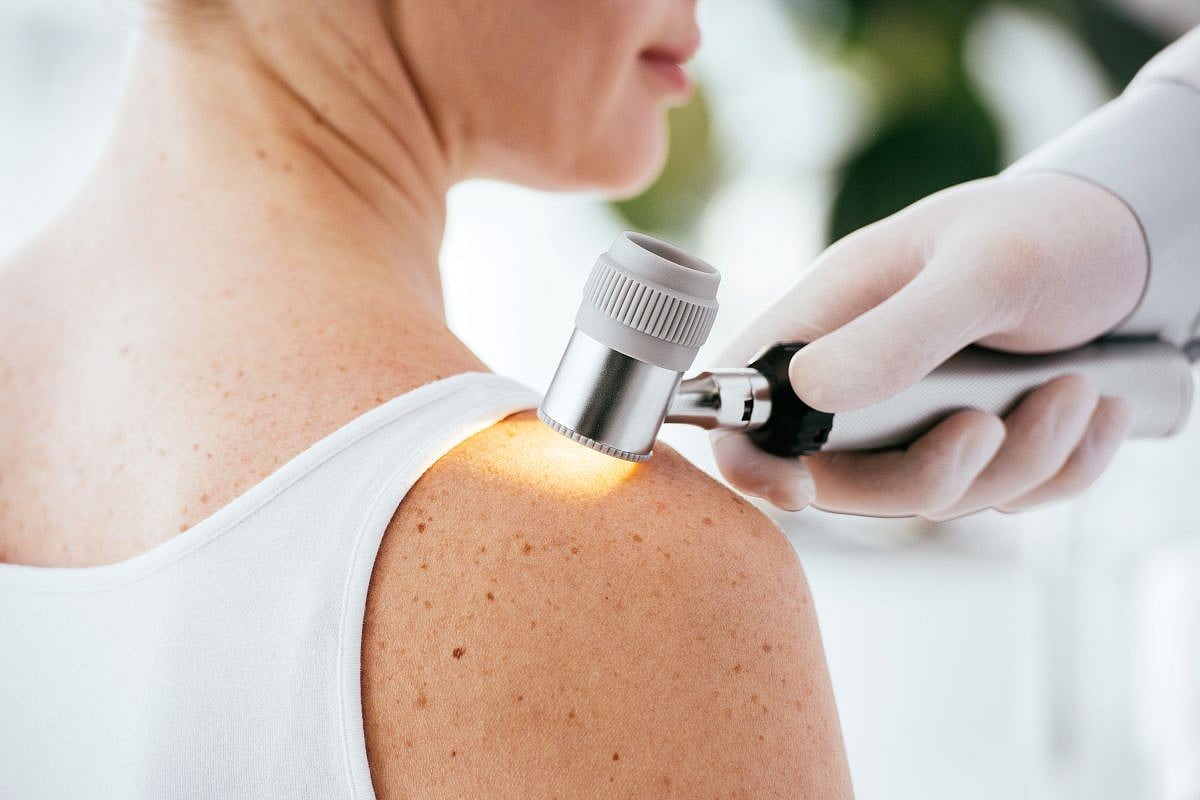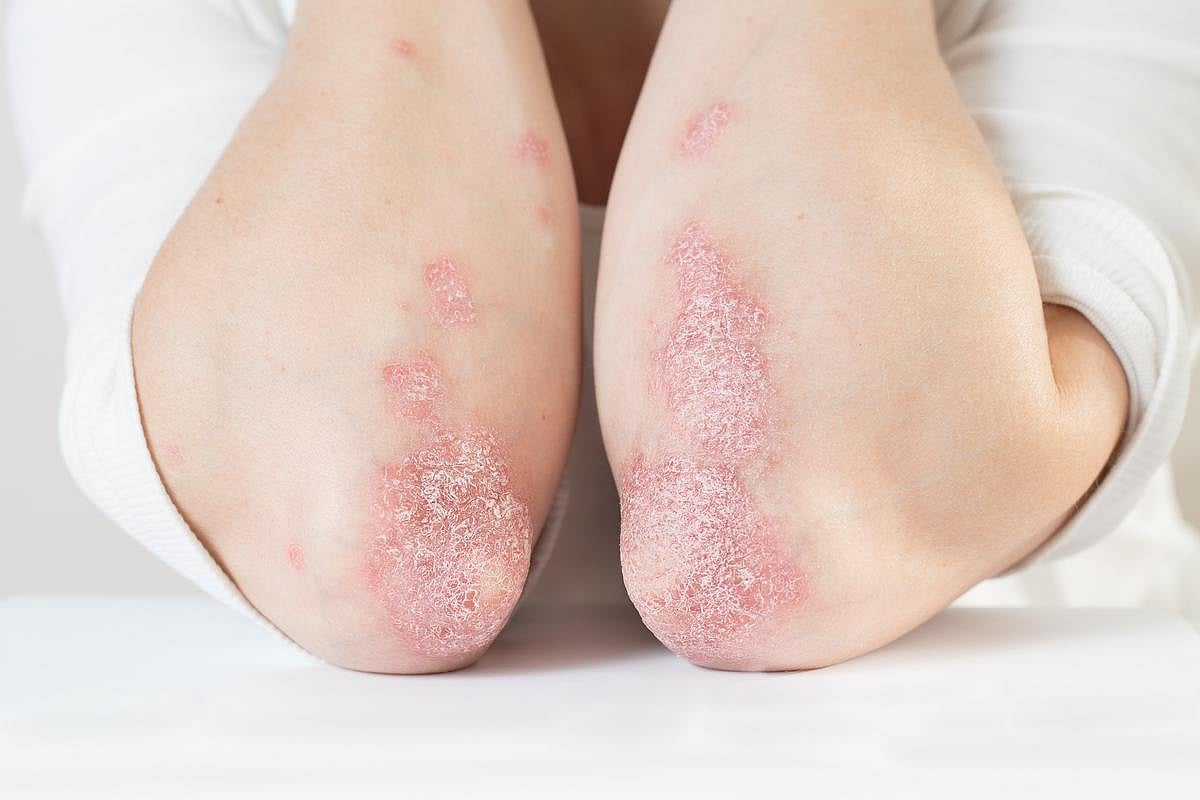Hidradenitis suppurativa (HS) is a chronic, inflammatory skin disease presenting with comedones, papules, nodules, and abscesses, as well as tunnels and hypertrophic scarring, which occur in areas with a high density of apocrine sweat glands, like skin folds, gluteal and genital sites [1, 2]. Innate immunity dysregulation and proinflammatory cytokines overexpression play a role in HS pathogenesis, which, however, remains not fully clarified [3]. To date, several genetic variants associated to disease susceptibility have been reported [4, 5] but genotype–phenotype correlation and genetic markers predicting the outcome and response to treatment are still lacking. HS is typical for adolescents and young adults but a smaller proportion of individuals develop HS later in life [2]. HS estimated prevalence is 0.05–4.1% worldwide, resulting in a quite common disease [6]. Females are mainly affected, with three-quarters of HS diagnoses being among women, who therefore need specific considerations and management strategies, particularly during pregnancy [7]. HS harms quality of life (QoL) of patients suffering from this condition, which is frequently barely controlled by treatments, leads to chronic pain, reduces mobility and social functioning [8]. Diagnosis is based on clinical criteria (i.e., lesion morphology, distribution of lesions, chronicity, and recurrence) [8], and early identification remains difficult: a European study reported a median delay of 7.2 years [9]. Indeed, HS misdiagnosis is still an issue; therefore, educating healthcare providers (HCPs), including non-dermatologists, would be helpful [10]. HS severity is still most frequently assessed by the Hurley staging systems; however, many score systems are being developed each year but none of which have achieved unanimous acceptance yet [11]. HS is often associated with non-cutaneous comorbidities (e.g., metabolic syndrome, obesity, arthritis) and has to be considered a systemic disease [12–16]. For instance, data from HS patient Italian registry show that HS adults are more frequently overweight or obese than the general Italian population (age-standardized prevalence ratio of 1.4; 95% CI, 1.1–1.9) [17]. Considering clinical manifestations complexity and variety, HS requires in-depth evaluations and an appropriate referral to specialists [12]. In this context, multidisciplinary clinics (defined as HS units), where different specialists (like dermatologists, surgeons, nutritionists, and psychologists) collaborate, would guarantee additional support to patients. However, such clinics are still very rare [10]. HS treatment is based on a multidisciplinary approach including medical and surgical treatments, together with general lifestyle recommendations [18]. As therapies are complex and often ineffective, improving treatment options, including both drugs and surgery, remains an unmet need [10].
To report and address the current unmet needs related to HS patient management, five Italian HS experts and five patients met in person twice. Their primary objective of these gatherings was to elaborate a consensus document to provide HCPs with standardized guidance to achieve appropriate HS management, focusing on patients’ wellbeing. To this purpose, experts and patients identified 14 relevant items based on published evidence and personal experience and formulated a series of consensus statements for each item. Consensus was reached using the Nominal Group Technique (NGT), with the involvement of an expert panel, including a methodologist. Here, we present the results of this effort.
Methods
Five Italian HS experts, five patients, and one senior clinical epidemiologist experienced in consensus techniques (facilitator) took part in two in-person meetings occurring in December 2023 and January 2024 to address issues in the management of HS and achieved a consensus paper. To identify topics of interest (items), NGT was selected as the first formal consensus approach. NGT aims to avoid typical problems generated from group dynamics, enhancing the independent and free participation of each member of the group, who can express his or her ideas without restrictions [19]. NGT historically consists of four main stages: silent generation, “round robin”, clarification, and voting. These steps are followed by a final group discussion of the items and a re-ranking process till the achievement of the consensus [20]. During this meeting, participants were initially asked to answer a question about the main aspects of interest and unmet needs in HS patient management, including the early approach to them. After reflecting on topics, they wrote down their ideas (idea generation), aware that their written opinions would not be editable. After this initial stage, the facilitator asked the participants to state their views, one at a time (round robin); then, all the members of the group discussed (clarification) and ranked the collected ideas (ranking of items). To generate statements concerning each of agreed item, the estimate-talk-estimate (ETE) method was chosen [21, 22]. ETE was again developed to overcome some of the negative aspects of group dynamics by combining the assembling of expert opinions on an anonymous basis during surveys with an open exchange during workshops [23–25]. Thus, the board members individually drew up one or more statements for each of the 14 items. The proposals were remotely harmonized by the facilitator into 50 statements. During the second in-person meeting, the board members and the facilitator reviewed and further discussed the harmonized statements, and finally agreed on a total of 52 statements, grouped by subject, and presented here as a consensus.
Results and discussions
The consensus statements covering relevant issues about HS patient management are shown in Table 1(Suppl. Material). The statements were collected and grouped into 14 main sections (or items) by topic and discussed with the evidence supporting them.
Implementation of a common approach in the management of HS, through the spread of a solid and consistent knowledge of the disease
- 1.1HS is a skin disease not fully recognized by physicians, while it is deeply known by specialists working in referral centers, where patients enter with delay after many visits. This leads to delayed diagnosis and treatment start. In-depth knowledge about HS has to be spread across the nation.
- 1.2Widespread knowledge of HS is a priority that has to be achieved through different communication strategies, including traditional (television, newspapers, radio) and new online media (social media) along with collaboration with patients’ associations.
- 1.3A standard approach to HS all across the nation is fundamental and consisting of common strategies between and within regions. This will allow an appropriate understanding of the disease (among physicians and patients) and the access to adequate care for patients.
- 1.4Scientific societies and political institutions should develop awareness about HS.
- 1.4.1The task force established by SIDeMaST (Società Italiana di Dermatologia e di Malattie Sessualmente Trasmesse) together with other experts’ networks should train dedicated specialists (frontline HCPs).
- 1.4.2Institutions should ensure the presence of HS units, in referral dermatologic clinics, where patients can be referred by frontline HCPs working in local clinics, through an efficient network (hub and spoke model).
- 1.5There is need for defining the criteria that identify dermatologic referral centers (HUBs) for the treatment of HS involving patient associations in their definition, as provided for by EU Regulation 2021/2282, and for mapping these centers in each region of the nation.
Rationale
Awareness on HS is still low among physicians, although it is not a rare disease (around 1% of global population is affected). All physicians taking care of patients with confirmed or suspected HS, should be efficiently informed and trained. Thus, specific knowledge should be disseminated also through non-dermatologic channels (both conferences and journals) [26]. A unified HS management is thus necessary nationwide, with the establishment and dissemination of HS units playing a crucial role in this regard. HS-units represent a model of multidisciplinary approach based on several HCPs involvement [27]. This will help patients to get a standardized clinical approach, and an equal and fair access to care. Moreover, general practitioners and local dermatologists are pivotal within this network as frontline healthcare providers, tasked with early disease recognition and prompt patient referral to HS units. Collaboration with these units is essential [28]. Training frontline HCPs is necessary to achieve this goal.
Phenotypes diagnosis and severity assessment of HS
- 2.1An accurate diagnosis of the multiple phenotypes of HS is crucial. The most challenging aspect of the diagnostic process is due to the several “unusual” phenotypes of the disease other than the “classic” one, which can lead to misdiagnoses and require different therapeutical approaches.
- 2.2The implementation of a scoring system to determine HS severity is a cornerstone of the management and treatment of this condition.
- 2.3The IHS4 (International Hidradenitis Suppurativa Severity Score System) is a novel scoring system, build by the European HS Foundation, that assesses both inflammatory (nodules and abscesses) and advanced (fistulas) lesions. The IHS4-55 is an updated dichotomous version able to evaluate responses to treatment, taking into account not only inflammatory, but also advanced lesions, like HiSCR (Hidradenitis Suppurativa Clinical Response) score -the most common primary outcome used in HS clinical trial- does.
Rationale
Given the absence of a specific diagnostic test, HS is diagnosed based on clinical evaluation [29]. The most updated and validated classification include up to 6 HS phenotypes: (1) regular type; (2) frictional furuncle type; (3) scarring folliculitis type; (4) conglobate type; (5) syndromic type; (6) ectopic type [29]. Considering that knowledge of underlying HS pathogenetic mechanisms is still lacking, phenotypic variants could be revised in the future [30]. Physicians have to take into account differential diagnoses (e.g., infections, tumors) when suspecting HS, being aware of the variety of involved sites and of atypical lesions that characterize HS (e.g., eroded pyogenic granuloma-like lesions), also contributing to misdiagnoses [26, 31]. Clinical manifestations variability requires an in-depth expertise in HS to formulate an accurate diagnosis. Many HCPs, whilst diagnosing HS, are not able to evaluate disease severity [28]. Although Hurley scoring system remains the most known and used classification to stratify HS severity, it displays limitations: it includes only 3 stages and is not useful for monitoring the efficacy of a treatment [29]. With the advent of novel effective therapies, new score systems were developed to differentiate clinical therapeutic responses. The HiSCR, defined in 2012, identifies treatment responders as those who achieve at least a 50% reduction in abscess and nodule count, without an increase in the number of abscesses or draining tunnels relative to baseline [30]. In 2017 the IHS4 was created as a continuous score combining inflammatory nodules, abscesses and draining tunnels [32]. A threshold application (i.e., 55% reduction of the IHS4 total score) has allowed IHS4-55 definition, a novel dichotomous IHS4 version that may rival HiSCR as a primary outcome measure in HS clinical trials [33].
Collaboration between patients’ associations and the scientific community to promote social protection for HS patients
- 3.1Complex and chronic diseases, such as HS, should be handled coordinately and a multidisciplinary approach represents the most effective strategy for managing these patients.
- 3.2Patients’ associations should be involved in the multidisciplinary teams that approach HS patients, with particular regard to organization activities and relationships with the institutions for better focusing on the unmet needs.
- 3.3Collaboration between patients’ associations and the scientific community represents a cornerstone for ensuring equity in providing timely access to diagnostic tools and innovative treatments, and social welfare for patients: recognition of HS as a chronic and disabling condition, leading to the right to full exemption, recognition of disability and handicap for adults and minors, smart working for fragile patients, and activation of distance learning for students with HS. Moreover, Essential Levels of Care (LEA) require a detailed and comprehensive update that will consider the needs of patients diagnosed with HS.
Rationale
Currently, an integrated multidisciplinary model is considered the best strategy to manage HS patients, reporting a high satisfaction level with this approach [27, 28, 34]. HS determines a profound QoL impairment due to mental disturbances, such as depression or anxiety, [35], comorbidities [12] and feelings of shame and stigmatization [26]. Patients often feel themselves responsible for their condition and do not seek medical care [26]. Evidence shows that HS has a severe impact on QoL in 60% of patients [36]. For these reasons, the disease management is moving toward an holistic and patient-centered approach [37] where patients’ associations should collaborate with multidisciplinary teams and scientific community to guarantee targeted interventions. Panelists suggest remote education for students, smart working, and psychological support since diagnosis as interventions to promote social protection to these patients.







Leave a Reply